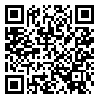Volume 4, Issue 2 (8-2021)
Iran J Health Insur 2021, 4(2): 118-127 |
Back to browse issues page
Download citation:
BibTeX | RIS | EndNote | Medlars | ProCite | Reference Manager | RefWorks
Send citation to:



BibTeX | RIS | EndNote | Medlars | ProCite | Reference Manager | RefWorks
Send citation to:
Ekhlasi M, Peikanpour M, Rasekh H. Explaining the Possible Achievements and Consequences of Various Exchange Rate Policies in Pharmaceutical Sector: A Qualitative Study. Iran J Health Insur 2021; 4 (2) :118-127
URL: http://journal.ihio.gov.ir/article-1-182-en.html
URL: http://journal.ihio.gov.ir/article-1-182-en.html
1- Faculty of Pharmacy, Shahid Beheshti University of Medical Sciences, Tehran, Iran
2- Department of Pharmacoeconomics and Pharma Management, Shahid Beheshti University of Medical Sciences, Tehran, Iran , M_peikanpour@yahoo.com
3- Department of Pharmacoeconomics and Pharma Management, Shahid Beheshti University of Medical Sciences, Tehran, Iran
2- Department of Pharmacoeconomics and Pharma Management, Shahid Beheshti University of Medical Sciences, Tehran, Iran , M_peikanpour@yahoo.com
3- Department of Pharmacoeconomics and Pharma Management, Shahid Beheshti University of Medical Sciences, Tehran, Iran
Abstract: (1686 Views)
Introduction: In recent years, sanctions have led to limitations in financial transactions, exchange rate fluctuations, and inflation rate rising in Iran. Under such circumstances, official exchange rate was allocated to essential goods such as pharmaceuticals, aiming to promote medicines’ affordability; but problems caused by the multiple-exchange-rate system have raised the idea of alternative policies development. After analyzing the current situation, this study examines the positive and negative impacts of implementing alternative policies on stakeholders as well as providing a framework for supportive policies to protect stakeholders against negative effects.
Methods: The present study is of qualitative type that was conducted in 2021. Besides literature review and extracting main indicators, semi-structured interviews and a focus group discussion were conducted for qualitative data collection. Then the data was analyzed by “content analysis” approach using MAXQDA software.
Results: By categorizing the 1686 primary codes, the main themes were obtained, including “Depicting the policy background”, “Evaluating current situation”, “Identifying alternative exchange rate policies”, “Analyzing predictable conditions”, “Determining supportive policies”, and “Necessity of establishment a feedback system”. Considering expert opinions, although allocating official currency to medicines has been successful in controlling pharmaceuticals’ affordability; the consequences such as increasing organizational corruptions, pricing challenges, growth of bureaucracy, supply chain disruption, and limitations on the pharmaceutical industry highlights the need for a change in this policy. Moreover, this change requires a supportive policy package, including performing “multi-phasing” pricing, and tax-offsetting to protect the pharmaceutical industry; as well as allocating recourses obtained from two currency differences to insurance systems, revising in “Iran FDA-insurance organizations memorandum of understanding”, and developing supplemental insurance plans for the lower deciles to protect the community. By depicting the exchange rate policy background and evaluating current situation, four alternative exchange rate policies emerge.
Conclusion: It seems that switching pharmaceutical exchange rate to a fixed rate near “Nima”, would best improve the current situation. In this regard, considering special supportive policies for different stakeholders and development of a feedback system are considered as the requirements beside implementation of exchange-rate policies. Also, among the implementation methods, considering positive and negative consequences, the gradual method along with the establishment of an inspecting framework, is considered as a suitable mechanism.
Methods: The present study is of qualitative type that was conducted in 2021. Besides literature review and extracting main indicators, semi-structured interviews and a focus group discussion were conducted for qualitative data collection. Then the data was analyzed by “content analysis” approach using MAXQDA software.
Results: By categorizing the 1686 primary codes, the main themes were obtained, including “Depicting the policy background”, “Evaluating current situation”, “Identifying alternative exchange rate policies”, “Analyzing predictable conditions”, “Determining supportive policies”, and “Necessity of establishment a feedback system”. Considering expert opinions, although allocating official currency to medicines has been successful in controlling pharmaceuticals’ affordability; the consequences such as increasing organizational corruptions, pricing challenges, growth of bureaucracy, supply chain disruption, and limitations on the pharmaceutical industry highlights the need for a change in this policy. Moreover, this change requires a supportive policy package, including performing “multi-phasing” pricing, and tax-offsetting to protect the pharmaceutical industry; as well as allocating recourses obtained from two currency differences to insurance systems, revising in “Iran FDA-insurance organizations memorandum of understanding”, and developing supplemental insurance plans for the lower deciles to protect the community. By depicting the exchange rate policy background and evaluating current situation, four alternative exchange rate policies emerge.
Conclusion: It seems that switching pharmaceutical exchange rate to a fixed rate near “Nima”, would best improve the current situation. In this regard, considering special supportive policies for different stakeholders and development of a feedback system are considered as the requirements beside implementation of exchange-rate policies. Also, among the implementation methods, considering positive and negative consequences, the gradual method along with the establishment of an inspecting framework, is considered as a suitable mechanism.
Keywords: Pharmaceutical Exchange Rate, Exchange Rate Policy, Supportive Policies, Pharmaceutical Exchange Rate Liberalization
Type of Study: Research |
Subject:
General
Received: 2021/02/21 | Revised: 2021/09/26 | Accepted: 2021/09/6 | ePublished: 2021/09/19
Received: 2021/02/21 | Revised: 2021/09/26 | Accepted: 2021/09/6 | ePublished: 2021/09/19
Send email to the article author
| Rights and permissions | |
 |
This work is licensed under a Creative Commons Attribution-NonCommercial 4.0 International License. |






